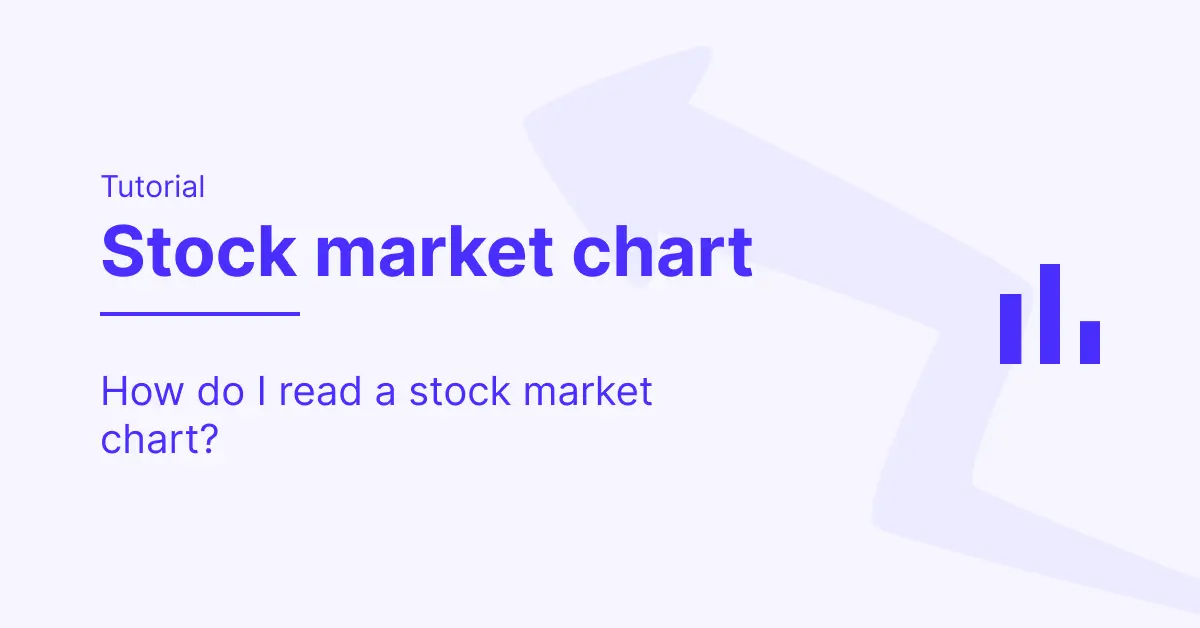Bonds in the stock market: Everything you need to know
Understanding bonds in the stock market is essential for being able to make informed choices by diversifying your portfolio and identifying investment opportunities. The majority of people understand how stocks work and their prices, but many are unaware of how the bond markets function and the interest of bonds in limiting risks and seeking a more stable return.
This article is aimed at beginners in the world of financial markets. The goal is to provide you with a clear overview of:
- What a bond is on the stock market
- Understanding the bond market, debt, yield...
- The difference between a stock and a bond
- What to pay attention to when buying a bond.
You will gain a better understanding of how bonds work, how they can fit into your financial strategy, and why it is important to know them in terms of risk and return.
 Understanding the functioning of bonds, which are similar to a loan.
Understanding the functioning of bonds, which are similar to a loan.Understanding bonds in the stock market
Bonds in the stock market are financial securities issued by a state, a company, or a financial institution to raise funds on the market. When a bond is issued, the issuer commits to repaying the borrowed amount, called nominal value, within a certain period of time, while paying interest at regular intervals to the holder of that security.
The holder of a bond plays the role of a creditor: you lend a certain amount to the issuer (the company or the state) in exchange for the promise of repayment of that capital at the maturity date, after which you will receive interest at regular intervals. Unlike a shareholder, who holds a part of the share capital, the holder of a bond cannot vote in the company.
It is the periodic payment of a fixed or variable amount until the repayment date that makes up the mechanism of interest payments. For example: if you hold a bond with an annual coupon of 3% for €1,000, you will receive €30 each year until maturity.
"Holding a bond means agreeing to be paid for lending your money, while - in principle - minimizing risk compared to buying shares." This system is of interest to anyone who wants to receive regular income and wishes to limit their exposure to the volatility of stocks.
The bond market therefore offers a system of investment quite different from buying shares.
Which of the following statements correctly describes how a bond works on the stock market?
- The holder of a bond becomes a shareholder of the company and can vote at shareholders meetings.
- A bond is a security that allows the holder to lend money to the issuer in exchange for regular interest payments.
- Bonds pay no interest, but entitle the holder to a share in the company's profits.
- The bond market is reserved exclusively for institutional investors. Main components of bonds
Main components of bonds
Bonds have a fairly simple functioning, and you will often hear about several key elements that will come into play in their functioning and their value.
Explanation of the coupon and its relation to the remuneration of the holder
The coupon represents the remuneration (what you will earn), paid by the issuer to the investor, on a previously agreed periodicity (for how long). It is often expressed as a percentage of the nominal value, which we will express in euros in the following example. For example, a bond with a coupon of 5% on a nominal value of €1,000 means a payment of €50 to the holder per year. Its payment constitutes the main remuneration of the bond for the investor.
Calculation of the nominal value
The notion of nominal value refers to the amount that the issuer undertakes to pay back to the buyer at maturity, i.e., the total amount borrowed divided by the number of bonds issued. If a company takes out a loan of one million euros in the form of 1,000 bonds, each bond will have a nominal value of €1,000.
Types of coupon rates
Their values can of course change. You will find rates that depend on interest:
- Fixed: their level remains the same throughout the duration of the bond.
- Variable: they vary according to a pre-established balance.
- Indexed: they follow the variation of a specific indicator (such as inflation).
These elements are crucial for the yield and risk of bond investments.
What does a bond coupon represent?
- The total amount the issuer repays when the bond matures.
- The number of bonds issued on the market.
- The percentage of profits returned to the shareholder.
- The periodic remuneration paid to the investor, calculated on the face value.
Importance of maturity in stock market bonds
Meaning of maturity in the repayment of loaned capital
The maturity date refers to the date on which the issuer of a bond (a synonym for obligation) must repay its capital to its holder. In other words, it is the date of repayment of the initial investment of the investor, after having also benefited from periodic coupon payments. It is similar to when you repay your loan to the bank every month. Knowing the maturity date is one of the fundamental points to know in order to invest correctly. It allows you to anticipate how long your money will be immobilised (and therefore not usable since it is lent).
Impact on the value of bonds on the secondary market before the maturity date
Prior to the maturity date, bonds can be traded on the secondary market. The value of bonds is constantly determined in a context of fluctuation, maintained by different adjustment movements around parameters such as prevailing interest rates and economic conditions. For example:
- Interest rate: for example, if they increase, the value of old fixed-rate bonds is likely to fall when the coupon repayment rate of the old bonds becomes less attractive.
- Economic conditions: especially during periods of recession when economic uncertainties arise, it is possible that investors will prefer safer assets, and an increase in demand means an increase in value.
Maturity is therefore one of the key factors that a wise investor must take into account in their investment strategy.
Valuation of bond values: issue price and more
The issue price, that is to say the amount at which a bond is offered when it is placed on the primary market, most often corresponds to a percentage of the nominal value (or "face value"), that is to say the amount that the issuer promises to repay at maturity. In other words, buying a bond issued at 100% of its nominal value means paying the same amount as the capital lent. However, bonds can also be issued at a lower price (below 100%) or at a higher price (above 100%), depending on market conditions and investor appetite. To simplify, it's a bit like going to the supermarket to buy a television that costs 100 €, except that sometimes you will pay 100 €, sometimes 90 €, and sometimes 110 € for it.
On the secondary market, the price of the bond varies notably according to the level of interest rates, the quality of the issuer, and the proximity of maturity. It is also expressed as a percentage of the nominal value, but it most often includes an additional element: the accrued coupon. It represents the portion of interest accumulated since the last payment until the date of purchase. As a result, when you buy a bond between two payments, you most often have to pay the seller the amount of this accrued coupon.
Practical example: if you buy a bond with a nominal value of €1,000, quoted at 102%, and the accrued coupon amounts to €10, the total amount paid will be: (€1,000 x 102%) + €10 = €1,030.
What is the issue price of a bond?
- The amount of interest the bond will pay each year.
- The price at which the bond is offered when it is first placed on the market, expressed as a percentage of par value.
- The future value the bond will reach at maturity.
- The amount of accrued coupon added to the purchase price on the secondary market.
Diversity of types of bonds: fixed rate, variable rate and zero coupon
Bonds are classified into three main categories according to the method of interest payment.
1. Fixed rate bonds
The amount of interest is fixed over time. Thus, when the bond is issued at a fixed rate of 3%, the investor receives 3% of the amount lent each year (regardless of the economic context). This provides great security.
2. Variable rate bonds
The amount of interest varies according to a reference index (such as inflation for example). In case of an increase in this index, they are increasing; conversely, in case of a decrease, they are decreasing. This type of investment becomes interesting in case of rising rates, less so in case of falling rates.
3. Zero-Coupon Bonds
No interest is paid during the life of the bond. It is issued at a price lower than its value at maturity: you receive the entire value of the bond at maturity, in one lump sum. Useful for receiving all the money on a specific date without making intermediate capital calls.
In summary: choose according to your needs between regular income (fixed-rate bonds), adaptive variability (variable-rate bonds), or a single payment at maturity (zero coupon).
 Different types of bonds
Different types of bondsThe risks associated with bond investments: what you need to know
There is no doubt that the stock market is a dangerous place for investment. The two main criteria for safety are, on the one hand, the risk of default, which refers to the issuer's ability to repay the capital and pay interest, and on the other hand, interest rates.
1. The risk of default
It is related to the issuer's ability to repay the capital and pay the interest. Indeed, a company (or a state) that is facing financial difficulties may not repay. But it differs according to their solidity:
- Government bonds (such as French OATs) are considered more reliable.
- Corporate bonds offer you less guarantee (especially for poorly rated companies).
2. Interest rates
The fluctuations in the reference interest rates applied by central banks impact the value of already issued bonds.
- If rates increase, the value of bonds in the secondary market decreases and vice versa.
- If rates are lowered, older bonds become more attractive and their price rises.
Before any investment, it is essential to take into account these two major dangers in order to better anticipate possible changes in the value of your bond portfolio.
Overall evaluation of bonds in the stock market: profitability and risks to consider
You now know that profitability and risks depend heavily on what you will earn periodically or at the maturity date of your bond, the purchase price of the bond, the level of reliability of the organization issuing bonds, ...
The interaction of these elements decisively impacts profitability:
- High coupon associated with a long maturity: often the promise of high yield, but increased exposure to interest rate movements.
- Low or no coupon: relying on final valuation at maturity, instead of regular income.
This assessment is necessary but not sufficient. Various factors also influence the quality of the value that should be assigned to the bond:
- Purchase price below nominal value: a purchase below nominal value can be exceptional in terms of profitability.
- Default risk on one side: if a less reliable issuer can offer a higher coupon in the market, the risk increases, perhaps by as much, on the other hand.
- Market sensitivity risk: the market value of the bond is likely to be affected by interest rate movements before its maturity.
Reconciling the search for yield with that of risk obviously appears to be the necessity of optimizing each of your bond investment decisions. This analytical approach is also the best way to optimize all your investments in order to build a portfolio tailored to your personal characteristics, experience, profile, and respective financial goals.
Which of the following statements correctly reflects the relationship between profitability and risk in a bond investment?
- A high coupon guarantees a high return without additional risk.
- Buying a bond above its face value automatically increases the yield.
- An unreliable issuer may offer a higher coupon, but this increases the risk of default.
- A zero-coupon bond is always less risky than a fixed-coupon bond.
The final word
It is essential to understand the logic that governs market bonds (as well as their fundamental elements: coupon, maturity, and issue price, for example) in order to make informed decisions and optimize the management of your portfolio. Each bond has its own logic: yield, risk, stability, and diversification. Deepening your knowledge of these financial instruments is also a way to identify opportunities related to your investor profile.
Do not hesitate to seek specialized resources, ask questions in financial forums, or engage in discussions with advisors. The more you master these concepts, the better you will be able to grow your savings and navigate calmly in the world of listed bonds.

